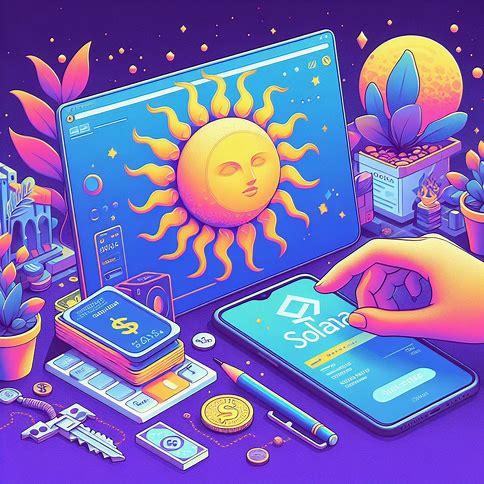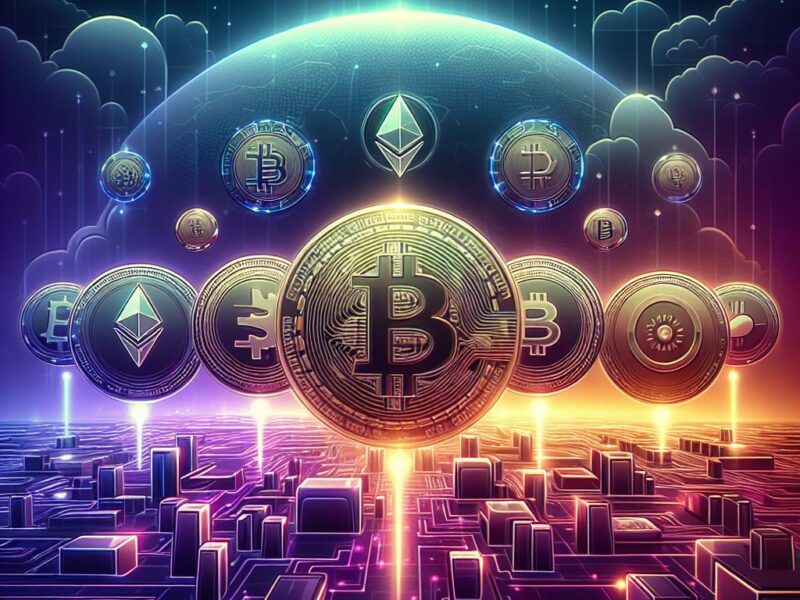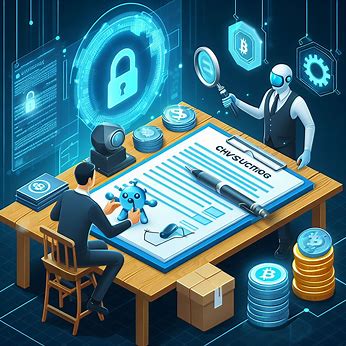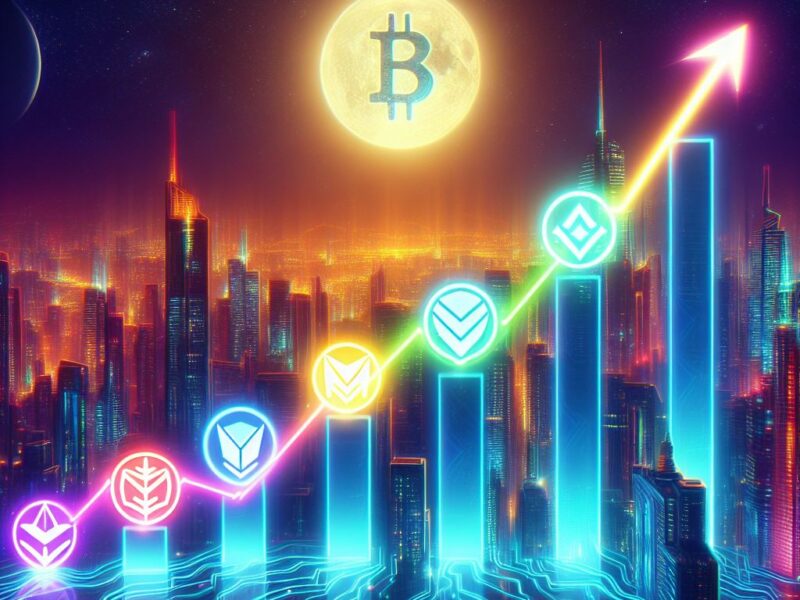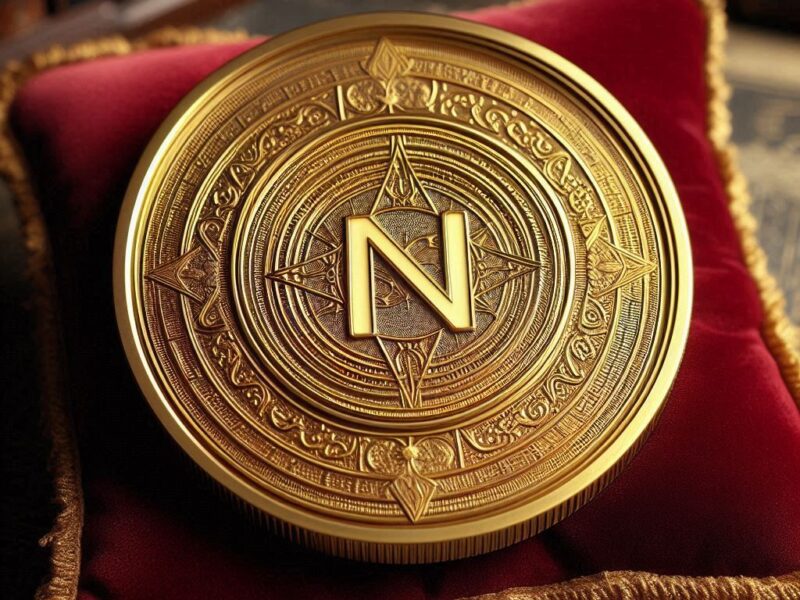Altcoins (alternative coins) is a term used to describe all cryptocurrencies other than Bitcoin. Their name comes from the fact that they are alternatives to Bitcoin and traditional fiat money.
The definition of an altcoin has evolved since the early days of cryptocurrency when only a few crypto assets existed. In 2024, the crypto market is changing as more new projects emerge and established coins continue to develop. In this article, we will explore 5 trending altcoins in 2024
Jump To
Toggle1. Solana (SOL)
Solana was established in 2020, and it continues to be a top altcoin in 2024. This high-performance blockchain platform is popular for its impressive speed and low transaction costs. With a unique proof-of-history consensus mechanism and a focus on scalability, Solana has attracted a wide range of developers and projects.
One of the key reasons behind Solana’s popularity is its ability to handle a large number of transactions per second (TPS). While Bitcoin and Ethereum struggle with scalability issues, Solana boasts a theoretical TPS of over 65,000. This makes it an attractive option for decentralized applications (dApps) and decentralized finance (DeFi) projects that require fast and efficient processing.
In 2024, Solana has continued to expand its ecosystem, with a growing number of dApps, decentralized exchanges (DEXes), and non-fungible token (NFT) marketplaces built on its blockchain. The platform’s native token, SOL, has also seen significant price appreciation, reflecting the increasing demand for Solana-based services.
If you are looking to invest in a promising altcoin with a strong foundation and a thriving community, Solana is worth considering. However, as with any cryptocurrency investment, you should conduct thorough research and understand the risks involved before making a decision.
2. Cardano (ADA)
Cardano, founded by Ethereum co-founder Charles Hoskinson, has been a standout performer in the altcoin market since its launch in 2017. Often referred to as a “third-generation” blockchain, Cardano aims to address the scalability and sustainability issues faced by earlier cryptocurrencies like Bitcoin and Ethereum.
One of the key features that sets Cardano apart is its innovative proof-of-stake (PoS) consensus mechanism called Ouroboros. This protocol allows for secure and efficient transaction processing while minimizing energy consumption, making it an eco-friendly alternative to proof-of-work (PoW) blockchains.
In 2024, Cardano has continued to evolve and expand its capabilities. The platform’s smart contract functionality, enabled by the Alonzo upgrade in 2021, has paved the way for a thriving ecosystem of dApps and DeFi projects. Cardano’s focus on academic research and rigorous development has also contributed to its reputation as a reliable and trustworthy blockchain platform.
Cardano’s native token, ADA, has seen significant growth in 2024, driven by the increasing adoption of the platform and the expanding use cases for its blockchain. If you are interested in investing in a project with a strong academic foundation and a commitment to long-term sustainability, Cardano is worth exploring.
3. Polkadot (DOT)
Polkadot, created by Ethereum co-founder Gavin Wood, has been making significant strides in the blockchain interoperability space. Launched in 2020, Polkadot aims to solve the problem of siloed blockchains by enabling cross-chain communication and collaboration.
The Polkadot ecosystem consists of two main components: the Relay Chain and parachains. The Relay Chain serves as the central hub, providing security and consensus for the entire network. Parachains, on the other hand, are individual blockchains that can be customized for specific use cases and connected to the Relay Chain for interoperability.
In 2024, Polkadot has seen a surge in adoption as more projects recognize the value of cross-chain compatibility. The platform’s unique architecture allows for seamless asset transfers, data sharing, and interoperability between different blockchain networks. This has opened up new possibilities for dApps and DeFi projects, enabling them to leverage the strengths of multiple blockchains simultaneously.
Polkadot’s native token, DOT, plays a crucial role in the ecosystem. DOT holders can participate in governance decisions, stake their tokens to secure the network, and even vote on which projects get to lease a parachain slot. As the demand for interoperability solutions continues to grow, Polkadot and its DOT token have seen increased interest from investors and developers alike.
If you believe in the future of blockchain interoperability and want to invest in a project that is at the forefront of this trend, Polkadot is worth considering. However, as with any investment, you should do your research and assess the potential risks and rewards before making a decision.
4. Chainlink (LINK)
Chainlink has established itself as a leading player in the oracle space, bridging the gap between blockchain smart contracts and real-world data. Oracles are essential for enabling smart contracts to access reliable, tamper-proof data from external sources, expanding the potential use cases for blockchain technology.
Chainlink’s decentralized oracle network allows smart contracts to securely interact with data providers, APIs, and payment systems. By leveraging a network of independent node operators, Chainlink ensures data integrity and prevents any single point of failure.
In 2024, Chainlink has continued to expand its partnerships and integrations with leading blockchain projects and traditional enterprises. The platform’s reliable and secure data feeds have become increasingly crucial for powering a wide range of applications, from DeFi protocols to insurance contracts and supply chain management systems.
Chainlink’s native token, LINK, is used to incentivize node operators and pay for data services within the network. As the adoption of Chainlink’s oracle solutions continues to grow, the demand for LINK has also increased, contributing to its price appreciation in 2024.
If you are interested in investing in a project that plays a critical role in the blockchain ecosystem and has strong partnerships with both crypto and traditional companies, you should research and consider Chainlink
5. Uniswap (UNI)
Uniswap, a decentralized exchange (DEX) built on the Ethereum blockchain, has been a key player in the DeFi revolution since its launch in 2018. Uniswap allows users to trade cryptocurrencies directly from their wallets, without the need for intermediaries or centralized order books.
One of the key innovations behind Uniswap is its automated market maker (AMM) model, which enables liquidity providers to contribute their tokens to liquidity pools and earn rewards in return. This model has made it easier for users to trade a wide range of tokens, including those with lower trading volumes.
In 2024, Uniswap has continued to evolve and expand its capabilities. The platform’s v3 upgrade, launched in 2021, introduced concentrated liquidity and flexible fee tiers, allowing for more efficient trading and better capital utilization. Uniswap has also expanded its reach beyond Ethereum, integrating with other blockchain networks to enable cross-chain swaps.
Uniswap’s governance token, UNI, has seen significant growth in 2024, driven by the increasing popularity of decentralized trading and the platform’s continued innovation. UNI holders can participate in governance decisions, vote on protocol upgrades, and even earn a portion of the platform’s trading fees.
If you believe in the future of decentralized trading and want to invest in a project that has been at the forefront of the DeFi movement, Uniswap is worth considering.
Key Takeaways
- Solana (SOL) is a high-performance blockchain platform known for its speed and low transaction costs, making it attractive for dApps and DeFi projects.
- Cardano (ADA) is a third-generation blockchain that addresses scalability and sustainability issues, using a proof-of-stake consensus mechanism called Ouroboros.
- Polkadot (DOT) focuses on blockchain interoperability, enabling cross-chain communication and collaboration through its Relay Chain and parachains.
- Chainlink (LINK) is a leading decentralized oracle network that bridges the gap between blockchain smart contracts and real-world data, ensuring data integrity and reliability.
- Uniswap (UNI) is a decentralized exchange built on the Ethereum blockchain, using an automated market maker (AMM) model to enable easy token trading and liquidity provision.
- When investing in altcoins, it’s crucial to conduct thorough research, consider your risk tolerance, and diversify your portfolio.
- The crypto market is highly volatile and subject to various risks, including regulatory uncertainties and potential hacks or scams.
- Engaging with the crypto community and staying informed about the latest developments can help you make sound investment decisions in the ever-evolving world of altcoins.
FAQs
1. What are the main factors to consider when researching altcoins?
A: When researching altcoins, consider factors such as the project’s technology, team, partnerships, real-world use cases, market trends, and regulatory developments. It’s also essential to assess the project’s community sentiment and overall adoption.
2. How do I store my altcoins securely?
A: To store your altcoins securely, you can use a hardware wallet (also known as a cold wallet) or a reputable software wallet that provides strong security features, such as two-factor authentication and multi-signature support. Always keep your private keys safe and never share them with anyone.
3. Can I trade these altcoins for other cryptocurrencies?
A: Yes, most reputable cryptocurrency exchanges allow you to trade altcoins for other cryptocurrencies, such as Bitcoin or Ethereum. Some exchanges also offer trading pairs with fiat currencies, enabling you to buy or sell altcoins directly using USD, EUR, or other supported fiat currencies.
4. How often should I review my altcoin investments?
A: It’s a good idea to review your altcoin investments regularly, perhaps on a weekly or monthly basis, depending on your investment strategy and market conditions. Stay informed about the projects you’ve invested in, monitor their progress, and adjust your portfolio as needed based on your investment goals and risk tolerance.
5. What should I do if the value of my altcoin investments drops significantly?
A: If the value of your altcoin investments drops significantly, it’s essential to avoid making hasty decisions based on emotions. Evaluate the reasons behind the price drop and assess whether the project’s fundamentals have changed. If you believe in the project’s long-term potential, you may choose to hold your investments or even buy more at a lower price. However, if the drop is due to a fundamental change in the project or a shift in market sentiment, it may be wise to reassess your investment strategy and consider reallocating your funds to other promising projects.
6. How can I stay informed about the latest trends and developments in the altcoin market?
A: To stay informed about the latest trends and developments in the altcoin market, follow reputable crypto news outlets, join online communities and forums dedicated to discussing cryptocurrencies, and engage with thought leaders and experts in the space. Attend industry conferences and events, both online and in-person, to network with other crypto enthusiasts and learn from their experiences. Additionally, regularly review project updates, whitepapers, and roadmaps to stay abreast of the progress and potential of the altcoins you’re interested in.
